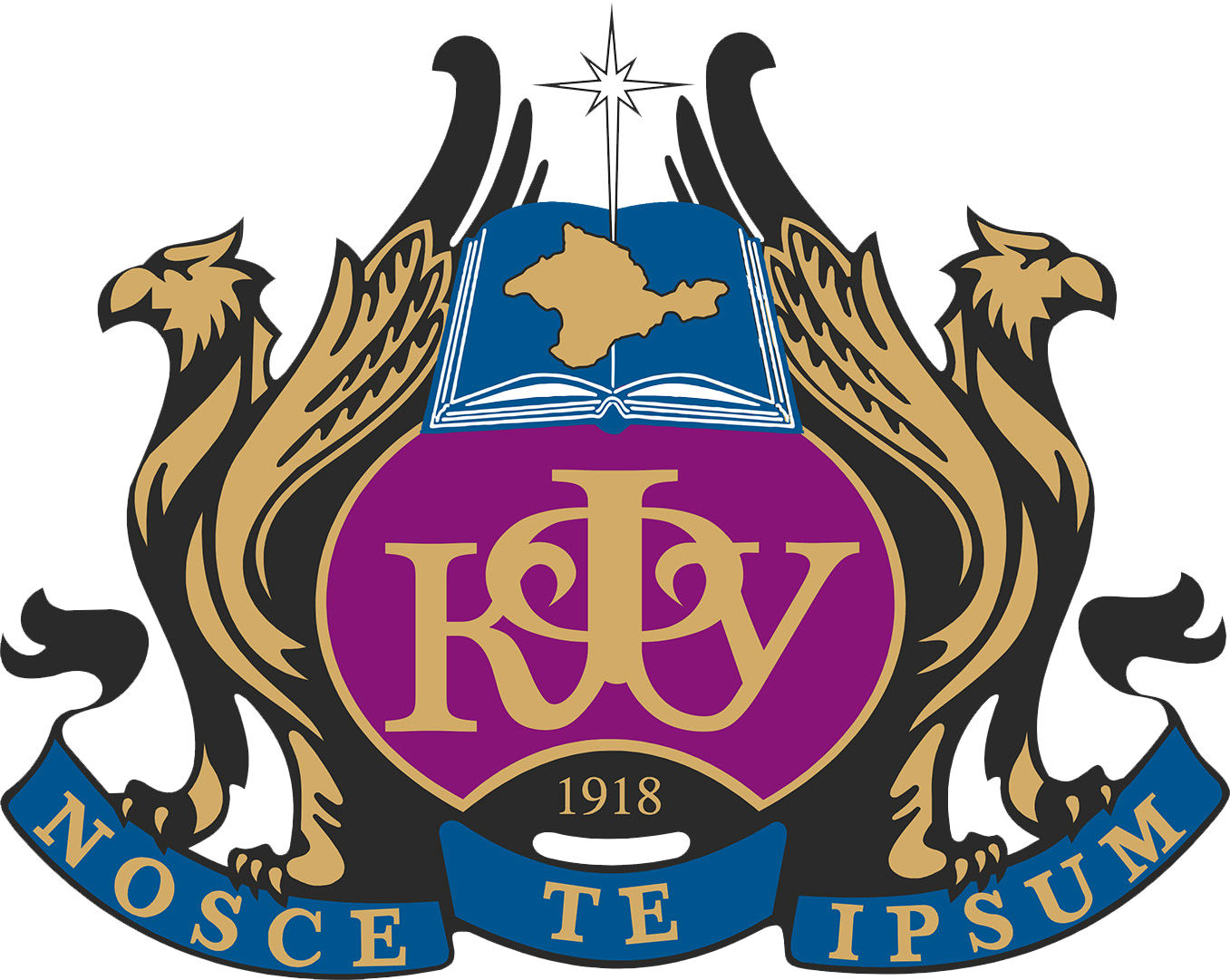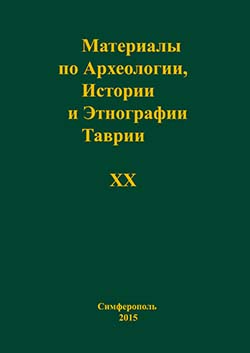NIC «Kurchatovskiy institut»
Institut arheologii RAN
This article presents a small collection of mould-blown square vessels, residing in the State Historical Museum, Moscow. Regrettably, most of them have come from unknown contexts. All but one of the regarded jugs have a Charlesworth-2 type rim (one of variant 2a, the others of variant 2b), which is considered a characteristic feature of Eastern Mediterranean origin. The only specimen with a ‘western-type’ rim (Charlesworth-1b) differs from the other ones in the glass colour (olive). Four jugs have base moldings of types widespread both in the Eastern Mediterranean and in western provinces of the Roman Empire. The peak of use of square jugs falls on the period between c. 70 and 120/130 AD. The jugs under consideration are most likely from the same time. Square jars are represented in the collection with the only specimen. Similar vessels are known both in the West and in the East, but the Greek inscription on our vessels speaks in favour of its Eastern Mediterranean origin. The context from which it comes is dated to the mid-third century AD at the latest. Finally, known to us analogies to two square bottles with funnel-shaped necks originate from Turkey and Syria and are dated to the fourth and fifth century, though the conditions of their discovery are unknown. Chemical composition of glass of seven vessels has been studied with SEM-EDS technique. Most samples belong to the group of Roman blue-green glass of the Syrian-Palestinian origin, with MnO content up to 0,5%. The glass of two vessels, decolourized with manganese, have a composition closer to Jalame glass. The first one is a jar. The second is a bottle with funnel-shaped neck made of mixed Mn-Sb glass.
glass vessels, mold-blown square jugs, jars, bottles, Roman Period, Northern Black Sea Area, chemical composition, SEM-EDS, Roman blue-green glass, Jalame glass, mixed Mn-Sb glass
1. Alekseeva E.M., Sorokina I.P. Kollekciya stekla antichnoy Gorgippii. M., 2007.
2. Arakelyan B.N., Tiracyan G.A., Hachatryan Zh.D. Steklo Drevney Armenii (I–IV vv.) Erevan: Izd-vo AN Armyanskoy SSR, 1969.
3. Burakov A.V. Kozyrskoe gorodische rubezha i pervyh stoletiy nashey ery. Kiev, 1976.
4. Guschina I.I., Zhuravlev D.V. Nekropol' rimskogo vremeni Bel'bek IV. M., 2016. (Trudy GIM. Vyp. 205).
5. Zhuravlev D.V., Lomtadze G.A. Keramicheskiy kompleks II v. n. e. s akropolya Pantikapeya // Drevnosti Bospora. 1999. T. 2. S. 98–113.
6. Zubar' V.M. Nekropol' Hersonesa Tavricheskogo I–IV vv. n.e. Kiev, 1982.
7. Kunina N.Z. Dva steklyannyh kuvshina iz nekropolya Nimfeya // Hudozhestvennye izdeliya antichnyh masterov / Otv. red. S. P. Boriskovskaya. L.: Iskusstvo, 1982. S. 119–124.
8. Kunina N.Z. Antichnoe steklo v sobranii Ermitazha. SPb.: ARS, 1997. 360 s.
9. Kunina N.Z., Sorokina N.P. Steklyannye bal'zamarii Bospora // Trudy Gosudarstvennogo Ermitazha. 1972. T. 13. C. 146–177.
10. Minchev A. Antichno st'klo ot Zapadnoto Chernomorie (I–IV v.). IV. Butilki // Izvestiya na Narodniya muzey Varna. 1990. Vyp. 26 (41). S. 56–78.
11. Otchet Imperatorskoy Arheologicheskoy Komissii za 1892 g. SPb., 1894.
12. Rumyanceva O.S. O steklodelatel'noy masterskoy v Alma-Kermene // RA. 2020. № 2. S. 72–84.
13. Rumyanceva O.S. Steklo mogil'nika Frontovoe 3 v Yugo-Zapadnom Krymu: hronologiya, dinamika rasprostraneniya i proizvodstvennye centry // MAIET. 2022. Vyp. XXVII. C. 72–116.
14. Rumyanceva O.S., Chervyakovskaya M.V., Chervyakovskiy V.S. Vtorichnye praktiki steklodelov v rimskoe vremya po dannym sostava stekla mogil'nika Frontovoe 3 v Yugo-Zapadnom Krymu // Materialy po
15. Ryzhova L.A. Kleyma na don'yah prizmaticheskih butylok iz raskopok Hersonesa // Heronesskiy sbornik. 2020. Vyp. 21. S. 36–46.
16. Son N.A. Sklyani posudini z Tiri // Arheologiya. 1988. № 63. S. 47–56.
17. Sorokina N.P. Tuzlinskiy nekropol'. M., 1957. (Trudy GIM. Vyp. XXVI).
18. Sorokina N.P. Steklo iz raskopok Pantikapeya // Pantikapey. M., 1962. S. 210–236. (MIA. № 103).
19. Sorokina N.P. Steklyannye sosudy iz Tanaisa // Drevnosti Nizhnego Dona. M., 1965. S. 202–248. (MIA. № 127).
20. Sorokina N.P. Antichnoe steklo v sobranii Odesskogo arheologicheskogo muzeya // Arheologicheskie issledovaniya severo-zapadnogo Prichernomor'ya. Kiev, 1978. S. 267–274.
21. Sorokina N.P. Anatoliyskie steklyannye sosudy I–II vv. iz Severnogo Prichernomor'ya // Antichnyy mir. Vizantiya: K 70-letiyu prof. V.I. Kadeeva. Har'kov, 1997. S. 214–224.
22. Strzheleckiy S.F., Vysotskaya T.N., Ryzhova L.A., Zhestkova G.I. Naselenie okrugi Hersonesa v pervoy polovine I tysyacheletiya novoy ery (po materialam nekropolya «Sovhoz 10») // Stratum plus.
23. Treyster M.Yu. Pozdneellinisticheskie i rimskie steklyannye sosudy v pogrebeniyah kochevnikov Podon'ya // Krym v sarmatskuyu epohu (II v. do n.e. – IV v. n.e.). 2020. T. 6. S. 154–188.
24. Shabanov S.B. Rimskoe steklo. Steklyannye sosudy iz sobraniya Central'nogo muzeya Tavridy. Simferopol', 2015.
25. Shabanov S.B. Kleyma na steklyannyh sosudah rimskogo vremeni iz Severnogo i Severo-zapadnogo Prichernomor'ya // PIFK. 2017. № 1. S. 88–104.
26. Shkorpil V.V. Otchet o raskopkah v g. Kerchi i na Tamanskom poluostrove v 1911 g. // Izvestiya Imp. Arheologicheskoy komissii. 1914. Vyp. 56. S. 1–74.
27. Yacenko E.G. Steklyannye sosudy rimskogo i pozdneantichnogo vremeni iz Tanaisa (po materialam iz raskopa XIX, issledovaniya 1993–2000 gg.) // Vestnik Tanaisa. 2007. Vyp. 2. S. 173–210.
28. Aguilar-Tablada Marcos B.M., Sbnchez M.D. Evidencias de un taller de vidrio en la ciudad romana de “Augustobriga” (Talavera La Vieja, Cbceres) // Lucentum. 2006. Vol. 25. P. 177–194.
29. Amrein H., Nenna M.-D. Inventaire des moules destinys a la fabrication des contenants en verre // Corpus des signaures et marques sur verres antiques. Vol. 2 / Eds. D. Foy, M.-D. Nenna. Aix-en-Provence, Lyon,
30. Antonaras A. Roman and Early Christian mould-blown vessels from Thessaloniki and its region, from the 1st to the 5th century AD // D’Ennion au Val Saint-Lambert. Le verre sou





